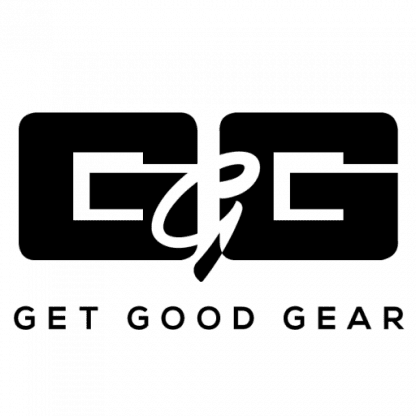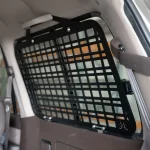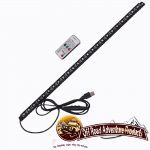While the benefits of Thermal Cooking are quite evident and the range of recipes encouraging there exists an obvious confusion about just what is a Thermal Cooker, how does it work and what are the differences between the brands.
Firstly a Thermal Cooker uses various forms of insulation to retain the heat initially generated, to complete the cooking process and ensure that a hot meal is available at the required time.
Examples of Thermal Cooking are the New Zealand “Hungi”, the Hawaiian “Luau”, the New England “Clam Bake” and the Scouts “Hay Box”.
Today’s Thermal Cookers have inner saucepans that the food is initially brought up to 100 degrees in before being transferred into the outer insulated container to slowly complete the cooking process.
[pullquote cite=”Author: Allan Rush” type=”left, right”]

Allan Rush: Consultant at RDS Technology Pty Ltd
[/pullquote]
From our research it would appear that the very first “Commercial Thermal Cooker” was developed by Thermos in 1908, this model had stacking aluminium saucepans and was successfully insulated utilising a glass vacuum chamber.
This “Thermetote” or “Hot Box” was commonly used commercially and domestically in many countries before the advent of pre-packaged foods and quick cooking became the flavour of the month.
With ever increasing utility costs and the exploding number of travellers on the road and at sea requiring the convenience of quick preparations but desiring wholesome slow cooked meals the Thermal Cooker has been “Re-Invented” as the must have cooking appliance for today’s busy lifestyle families.
With the rising popularity there have been many brands and models all claiming to produce similar results however with the huge differences in pricing comes confusion over which one is the right one for you.
To break this down into more manageable parts we have separated the basic requirements so that you may achieve a more informed understanding of what makes them work.
Insulation:
- The insulation method is probably the most important feature as poor insulation can mean cold or spoiled food when you are expecting a piping hot meal.
- The majority of the proffered models all appear to have two-pack foam insulation between walls of either plastic or stainless steel and plastic and while two-pack foam is a reasonable insulator it still consists of tiny air bubbles that will slowly dissipate the heat from the inner to the outer, similar to older style foam eskies.
- On average this foam insulation releases internal temperatures at rates of approximately 6 to 8 degrees per hour and this can be felt by hand on the outer walls.
- Special care must be taken to ensure the outer container is not immersed in water as it will find its way into the air pockets creating an even faster loss of temperatures and can develop harmful molds and bacteria that form best in warm, damp and humid conditions.
- Vacuum insulated Thermal Cookers lose approximately 3 to 4 degrees per hour and are totally sealed against potential molds and bacteria.
Inner Saucepans:
- To begin the process the food must be brought to temperature and this requires a heat source and a saucepan so the inner saucepans must be capable of successfully doing the job on any heat source available.
- For a Thermal Cooker to work efficiently it requires that the food be kept at high enough temperatures for as long as possible therefore the quality of the saucepan denotes the efficiency of the Thermal Cooker as much as the insulation method.
- Many of the cheaper foam insulated models have very thin based saucepans and some do not have any form of sandwich base atall making cooking a more difficult and obviously less rewarding enterprise however some of the more expensive models do have a reasonable multi-ply base.
- After cutting open and measuring many inner saucepans it would appear that the Thermos Shuttle Chef has the heaviest multi-ply base and therefore the greatest heat retention capabilities.
- Many of these models have a smaller saucepan that hangs from the top lip of the major saucepan to provide two meals in the same container and the majority of these smaller saucepans do not have a decent base that can be used as an individual saucepan when required however there are a few models that do (in particular the Shuttle Chef).
- Many models utilise the same lid for both the smaller saucepan and the larger and so there is not always an individual lid for each of these saucepans making it difficult to cook normally.
- One of the major concerns when using one saucepan inside another is the potential for contamination as the base of the smaller saucepan could have foreign material on it from what-ever stove top it was cooked on and this is now inside with the main meal so you need to be doubly attentive to this risk as you are intending leaving these meals in a warm environment for a long period of time.
- Secondarily when the meals are about to be served you cannot just place the smaller inner saucepan onto a bench top as the base of the saucepan will have food residue from the main meal below, therefore it needs to be wiped clean before serving.
Protection when travelling:
- As Thermal Cookers are being predominantly utilised for “cooking on the move” they need to be capable of ease of transport as well as usage therefore consideration needs to given to the overall size as many of these can be quite bulky in the case of the foam insulated models however the vacuum insulated models are a smaller outer container for the same sized inner capacity.
- The lid locking mechanism is another area that has cause for concern as accidental or rough handling conditions can potentially open the lid exposing the food to spillage or spoilage so consideration is required for the number of attachment points as well as the type and style of locking mechanism. Some models support only a flimsy magnetic catch whereas others have a push button spring loaded mechanism that can easily be knocked open however the Thermos Shuttle Chef has a double over-centre latch mechanism that provides three attachment points rather than the more common two points.
- Metal catches, springs and clips will be affected by food acids over time therefore you need to be able to replace these as required so consideration needs to be given to those brands that guarantee supply of these wear parts.
- As a rule camping equipment gets a much harder life than equipment used when you are stationary and Thermal Cookware is no exceptions therefore make sure the model you choose has a protective cover that is well padded to minimise external damage and of course contain any potential spillage from rough travelling.
Ease of cleaning:
• With any cookware the ease of usage is one issue but the ease of cleaning is potentially the greater issue especially while you are travelling, so ensuring that you purchase 18/8 stainless steel heavy based saucepans is vital to both the cooking as well as the cleaning.
• One of the extreme danger points with Thermal Cookers is the removal of any steam or food residue from the hinge points as this can potentially form molds and bacteria that will affect the safety of the next meal to be cooked.
• It is noted that the Thermos Shuttle Chef has a place to put the saucepan lid when serving, onto a shelf on the outer container lid, rather than placing a hot food covered lid onto a table top and that the outer container lid is also easily removed to make the cleaning of hinge points simple…This appears to be the simplest and safest method amongst all the models.
• Foam Insulated Thermal Cookers should not be immersed in water as it will find its way into the air pockets potentially developing harmful molds and bacteria that form best in warm, damp and humid conditions.
Size really Matters:
- This is the biggest issue with all Thermal Cookers as the principle of thermal cooking is to retain temperatures in the food safety range for the longest period…..you can certainly cook a meal that can be ready to eat in a few hours and this is the way much of the cooking is actually done at home but for the traveller or the busy housewife, being able to put on an evening meal with just minutes of stove top preparation so that a wholesome meal can be eaten at the end of the day is one of the most endearing features of Thermal Cooking.
- Consider the humble Thermos Flask for hot water…..while it is full it will stay really hot for 24 hours but only half fill it or take a couple of cups out for a cuppa and the temperature will drop much more quickly. This is due to the amount of air inside the flask as it is much harder to keep air hot than it is to keep liquids or solids hot, therefore the fuller the container is then the longer it will retain temperature.
- For ALL Thermal Cookers, to retain temperature for the longest period, they need to be approximately 75% full of something hot/cold therefore you need to decide a volume for the majority of the cooking you will be doing rather than choosing the largest saucepan for the odd Pot Roast or Corned Silverside as this will totally restrict your usage for smaller meals.
- Many Thermal Cookers have the divided saucepans so that you can cook a smaller meal in one and have boiling water in the other to ensure a maximum temperature retention however choosing a large double saucepan arrangement will mean increased energy costs as the boiling of water actually requires more energy than the heating of foods.
- The Thermos Shuttle Chef is the only Thermal Cooker to offer two complete stacking saucepans in one of their models rather than one inside the other which allows for cooking two completely different meals at the same time or only one meal and boiling water in the other.
- Some models have even included an unregulated electric element in the base to overcome the heat loss developed in their equipment however this totally negates the Thermal Cooking principle and you might as well purchase a cheaper electric slow cooker.
The secret to why it works so well:
- People are just amazed at how simple cooking with a Thermal Cooker really is and they cannot get their heads around how the meat and be so tender and moist and yet the vegetables retain their shape, colour and texture even after a 10 hour cooking process.
- There really is a simple explanation for all of this and unfortunately we miss the point of all of this when cooking food most other ways.
- All ingredients actually cook in separate but specific temperature bands, cooking slower as the temperature gradually drops.
- We all know that vegetables have to be brought to the boil to cook however the reverse is also true…as the temperature drops the vegetables will cook slower until the temperature gets below approximately 90 degrees where they basically stop cooking but will stay hot, retaining their shape, colour and texture slowly marinating in the juices……The longer they are held at a “simmer” will determine the extent of the cooking rather than how long they stay inside the Thermal Cooker so denser vegetables such as Potato require the longest simmer time while peas and beans the shortest time.
- Quick Breads, Cakes and Dampers etc will all stop cooking when the temperature drops below what is required to cook them so they can safely be left all night and they will be perfectly cooked, retaining their moisture and be ready to eat.
- Proteins on the other hand will continue cooking over a much wider temperature band and therefore will continue to tenderise well below the food safety levels and this includes Lentils, Chick Peas, and Kidney Beans etc.
- Sous Vide cooking ( cooking in a boiling bag immersed in water) has become widely popular now and is perfect for use in a Thermal Cooker ensuring the moistest Chicken Breasts, Turkey and Fish to name a few (However ensure you are using a specialised “Boiling Bag” as plastic or oven bags are not suitable and can soften or split when boiled).
Things you can do with a Thermal Cooker:
- The purchase of a Thermal Cooker is an investment in the ease and enjoyment of cooking and eating of full flavoured foods.
- It is a highly nutritious, wholesome slow cooker that can produce excellent results with minimal efforts and is eminently suitable to our busy lifestyles, our workers and travellers on the land, sea and air as well as reducing our burgeoning utility costs.
- Thermal Cooking is widely regarded as “ticking all the boxes” for sustainability, nutrition, health and cost effectiveness as well as being recommended by Naturopaths for healthy cooking where retained food values and the lack of destroyed vitamins and minerals are essential.
- Don’t just consider a Thermal Cooker for Silverside or Rice although you probably would not cook either of these any other way anymore but also for the excellent range of meals that can be prepared and enjoyed….there are so many recipes available and some web sites have multitudes of free to download recipes available
- Ever considered cooking a Cheesecake without an oven or even being able to make your own Quick Breads or Dampers while you are asleep.
- Taking a Chilli Nacho or Salsa Dip to a party with a bag of corn chips.
- Families with children really enjoy the fact that they can feed the children at 4.30 in the afternoon when the hungriness hits and still be able to enjoy the adults meals at a later time with a bottle of wine…this is of course best achieved with the two saucepan Thermos Shuttle Chef model.
- Children that play sport after school or on weekends can enjoy home made hot dogs with fried onions or their own hamburgers or steak sandwiches piping hot at supermarket prices and not have to pay exorbitant fees for stale buns and poorly prepared take away foods.
- Finger food for fishermen, honey soy chicken wings or pork spare ribs prepared in minutes but eaten hours later.
- Farmers and Shift workers, Elderly Parents and Invalids, Nurses and Miners the list goes on.




